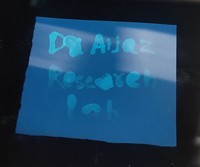Advertisement
Grab your lab coat. Let's get started
Welcome!
Welcome!
Create an account below to get 6 C&EN articles per month, receive newsletters and more - all free.
It seems this is your first time logging in online. Please enter the following information to continue.
As an ACS member you automatically get access to this site. All we need is few more details to create your reading experience.
Not you? Sign in with a different account.
Not you? Sign in with a different account.
ERROR 1
ERROR 1
ERROR 2
ERROR 2
ERROR 2
ERROR 2
ERROR 2
Password and Confirm password must match.
If you have an ACS member number, please enter it here so we can link this account to your membership. (optional)
ERROR 2
ACS values your privacy. By submitting your information, you are gaining access to C&EN and subscribing to our weekly newsletter. We use the information you provide to make your reading experience better, and we will never sell your data to third party members.
Nanomaterials
Chemistry In Pictures
Chemistry in Pictures: Rough atomic terrain
by Manny I. Fox Morone
May 13, 2022

Mistakes can be beautiful in the HelsinkiALD group—a lab focused on atomic layer deposition at the University of Helsinki. Doctoral researcher Alexander Weiß made this multicolor film by accident after depositing thin layers of hafnium oxide. The goal was to make a totally smooth film of atoms, but the range of colors on the substrate reveals that the film has a slightly varied thickness across its surface, each level of thickness amplifying a different wavelength of the ambient white light. (The same thing makes the rainbow patterns on soap bubbles.) “So on a nanometer scale this would compare to a mountain-valley landscape, which makes the film look nice but otherwise useless.” Weiß says. As an example of what a thin film ideally looks like, you can see one of his smoother, single-color films made of aluminum oxide below.

Submitted by Alexander Weiß. Follow the HelsinkiALD group on Twitter and the University of Helskinki chemistry department and Alexander on Instagram.
Do science. Take pictures. Win money. Enter our photo contest here.
Correction
This story was updated on June 24, 2022, to correct Alexander Weiß's position. He is a doctoral researcher, not a postdoc.





Join the conversation
Contact the reporter
Submit a Letter to the Editor for publication
Engage with us on Twitter